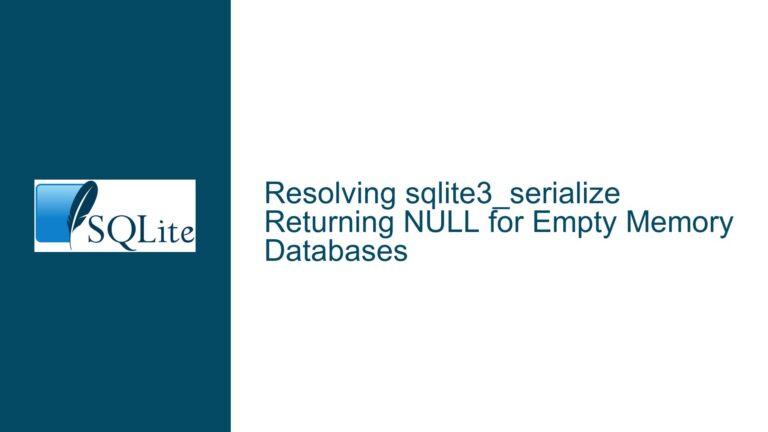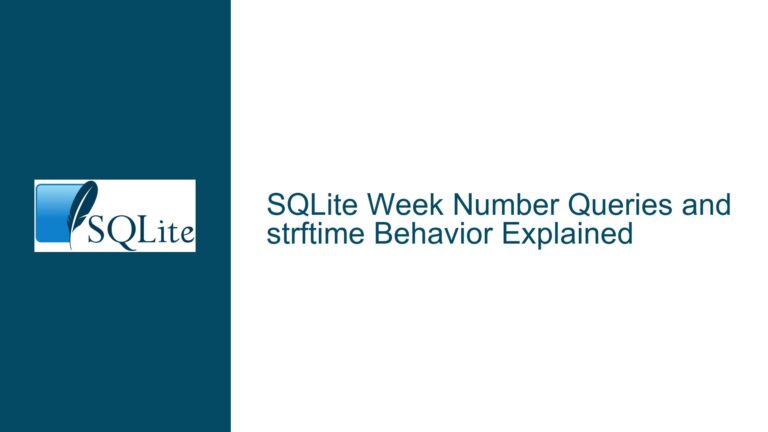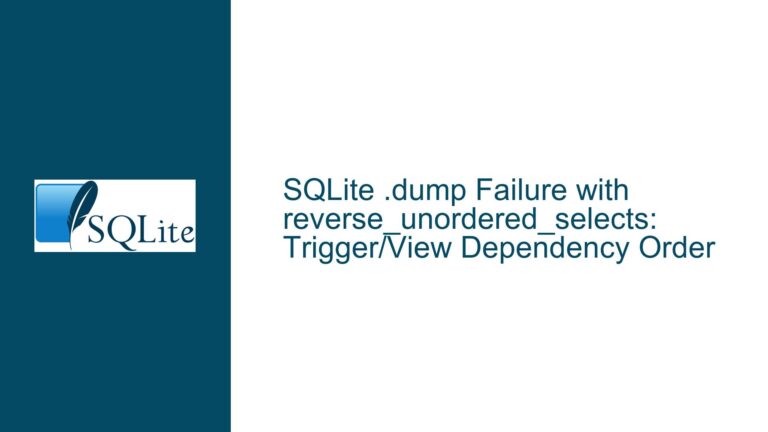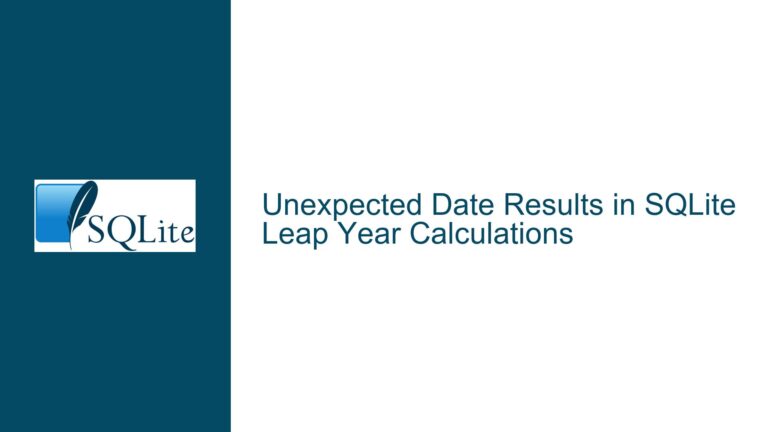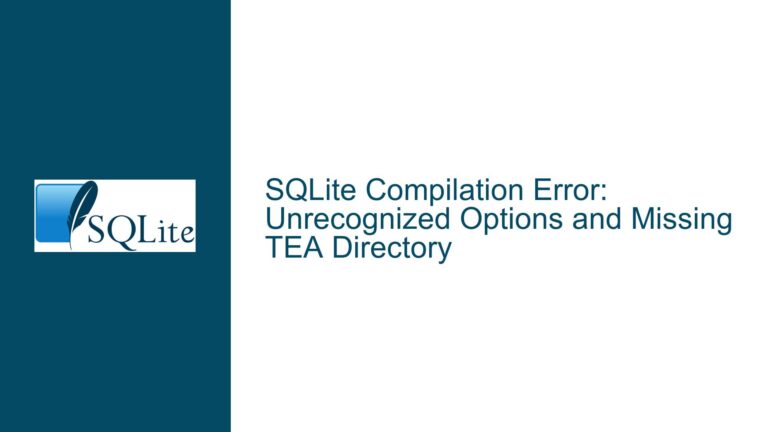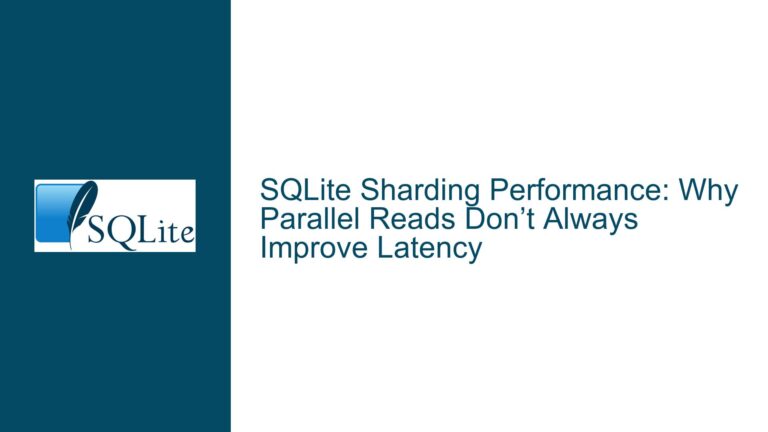Resolving sqlite3_serialize Returning NULL for Empty Memory Databases
Understanding the sqlite3_serialize Behavior for Zero-Size Memory Databases Issue Overview: Serialization of Empty In-Memory Databases Returns NULL The core issue revolves around the behavior of SQLite’s sqlite3_serialize function when applied to an empty in-memory database. When a new in-memory database is created and no operations (e.g., table creation, data insertion) are performed, the database remains…
